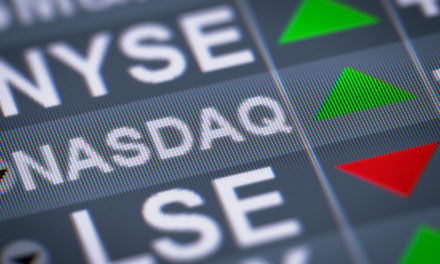We are in the midst of the longest bull market run in history by most measures, with seven previous bull markets lasting an average of 76 months.
According to Real Investment Advice, the mean decline from the peak of the past six longest bull markets has been minus-51 percent.
So when is the next bear market coming?
It could be now.
Per Real Investment Advice (edited for length):
Here are the top ten reasons why we may be entering a bear market:
1. Markets Generally Move in Anticipation of a Change in the Rate of Economic and Corporate Profit Growth – That Path and Trajectory Are Deteriorating: Since 1860 there has been at least one recession in each decade – representing 47 recessions since the Articles of Confederation was approved in 1781. We have not yet had a recession in the current decade but, my view is that this decade will not be spared and that we will likely be in a recession in the second half of next year. (See my 15 Surprises for 2019).
2. President Trump is Making Economic Uncertainty and Market Volatility Great Again (#MUVGA). Trump’s more frequent and incendiary twitter utterances and behavior reflects badly on him, his office and our country. His conduct and policy (often seemingly written ad hoc on the back of a napkin) are arguably beginning to adversely impact our markets as his Administration’s dysfunction and policy (conflated with politics), and have begun to reduce business and consumer confidence and is starting to negatively influence the real economy.
3. A Pivot in Monetary Policy: For years a zero interest rate policy in the U.S. has served to repair the domestic economy as it came out of the Great Recession in 2007-09. Unfortunately it has had second order consequences like pulling forward economic growth – already seen in Peak Housing and Peak Autos. Artificially low rates have served to protect many corporations who have been temporarily resuscitated. Some of those should not have been permitted to survive – and they won’t in the next recession. This served with liberal loan terms (“covenant lite”) could produce a surprisingly steep economic downturn compared to consensus expectations.
4. Economic Growth and Profit Estimates Are Substantially Too High: With U.S. Real GDP forecast to fall back into the +1% to +2% range in 2019’s first half and turning negative in the second half, the contraction in valuations (so apparent thus far in 2018) may continue in 2019. (See my 15 Surprises for 2019). Over there, matters are worse. England has never been more divided (Brexit), Italy (one of the largest economies in the EU) is on the economic deathbed, Deutsche Bank (DB) (and its monstrous derivative book, poor loan quality and systemic money laundering) is the most dangerous financial institution in the world and two of Europe’s most important leaders (Merkel and Macron) are so unpopular that both may be on the way out.
5. The Chinese Challenge to U.S. Hegemony Is a Battle For the Next Century – It Will Likely Be Long Lasting, Disruptive to Current Supply Chains and Costly to Profits: We have likely started a lengthy ‘Cold War in Trade’ with China – a time frame measured in years not (three) months.
6. The Apple Complex (its suppliers) Have Been Upended by a Maturing High-End Smart Phone and Weakening iPhone Market and The Social Media Space is Under Increased and Costly Regulatory Scrutiny: These factors have a broad impact on the market leading technology stocks and for the market as a whole. Moreover, over the last decade technological progress has outpaced regulatory supervision – but this is now being reversed as the social media companies now face the existential threat of rising regulations. The costly imposition of regulatory oversight is something I have been writing about for over a year.
7. An Avalanche of Debt: The private and public sector are levered more than any time in history as, rather than addressing the flaws in our system, we tried to solve the last debt crisis with trillions of dollars of more debt. It is the existence of this mountain of debt that has delivered a fragile economic recovery despite a 2 1/4% Federal Funds rate. Given this, a rate hike of only 25 basis points today has about the same impact of 75 basis points a decade ago. As such that accumulated debt loads are vulnerable to a weakening economy and/or rising interest rates (there have been eight rate hikes since the 2016 election.
8. The Market’s Structure Has Made Equities More Vulnerable Than At Any Time Since October, 1987 (see the Wall Street Week interview from October 16, 1987, above): Passive products and strategies (which are generally agnostic to fundamentals) are the dominant factors in market trading. Like “Portfolio Insurance” 31 years ago, they “buy high and sell low.”
9. With Short Term Interest Rates Now Meaningfully Above the Dividend Yield on the S&P 500 Index – There Is Now an Alternative to Stocks: The dividend yield on the S&P is about 1.8% compared to a one month Treasury note rate of 2.35%, a six month note yield of 2.54% and a one year note yield of 2.68%. Goodbye T.I.N.A. (‘there is no alternative’) to C.I.T.A. (‘cash is the alternative’). In terms of valuations, too many look at Non GAAP earnings (15-16x forward EPS) and ignore the record difference between Non GAAP and GAAP which would move the price earnings ratio to close to 20x. As well price to book, price to sales, market capitalization to GDP and Shiller cyclically adjusted P/E ratio speak (graphic) volumes about the degree of overvaluation today.
10. Technical Damage: Uptrends in place for nearly a decade have been reversed.




